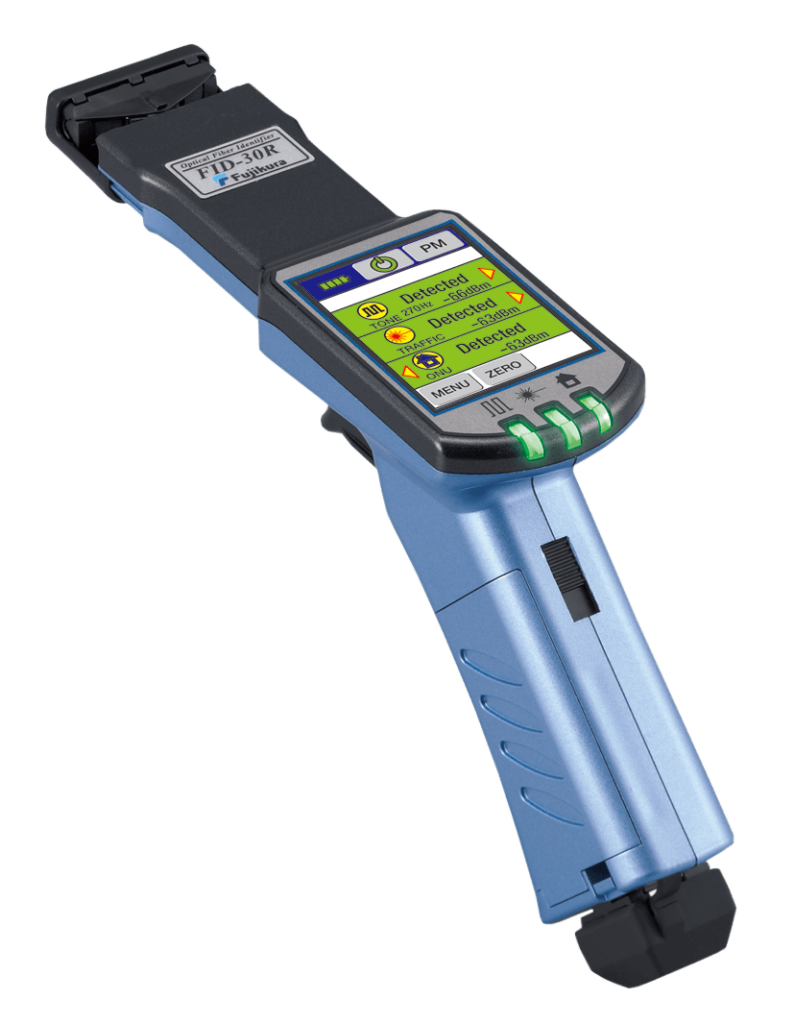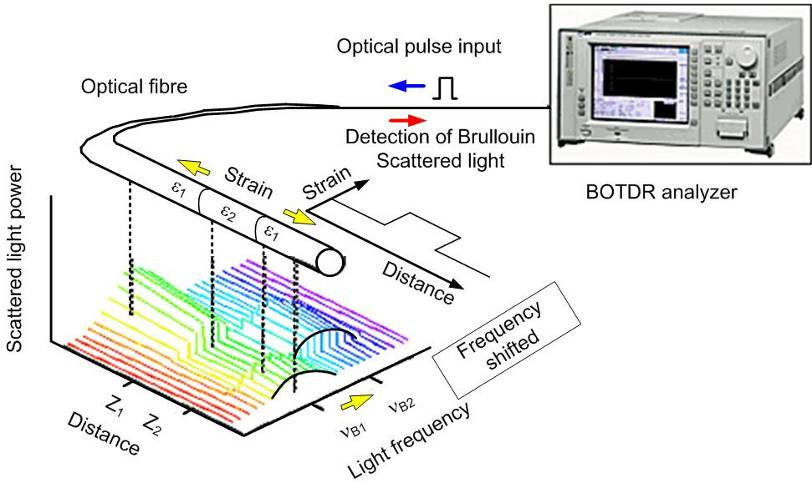Key Factors When Choosing an Optical Fibre Diameter Analyser
Key Factors When Choosing an Optical Fibre Diameter Analyser
Blog Article
Optimize Your Fibre Optic Efficiency: Comprehending Optical Fiber Size Analyser Modern Technology
The efficiency of fibre optic systems is critically affected by the accuracy of their diameter, a factor typically forgot in the quest of optimum signal stability. Understanding the technology behind optical fibre diameter analysers discloses the intricate balance in between measurement accuracy and manufacturing top quality. These devices not only improve conformity with sector criteria but likewise provide real-time insights that can preemptively attend to possible issues. However, the effects of their use extend beyond simple dimension; they can essentially alter the landscape of fiber optic efficiency. What factors should one take into consideration to harness their complete capacity?
Importance of Optical Fiber Size
The size of optical fibre plays a vital function in establishing the performance and effectiveness of communication systems. It affects numerous vital criteria, including the mode of light proliferation, depletion, and data transfer ability. Larger diameters normally permit for multiple light modes, promoting greater information transmission prices. Alternatively, smaller diameters tend to sustain fewer settings, which can boost signal quality and decrease crosstalk.

Additionally, recognizing the diameter's ramifications can bring about cost savings by decreasing the demand for signal boosting and repeaters in considerable networks (optical fibre diameter analyser). Finally, the importance of optical fibre size can not be overemphasized, as it straight affects the total efficiency and dependability of modern interaction systems

Just How Diameter Affects Signal Quality
Signal quality in optical fibre systems pivots dramatically on the size of the fiber. The diameter influences numerous essential parameters, including depletion, bandwidth, and modal diffusion. A smaller sized diameter can result in greater depletion prices, leading to signal loss as light journeys with the fiber. This depletion can jeopardize the honesty of the transmitted data, leading to a decrease in signal high quality, particularly over fars away.
Alternatively, bigger sizes normally enable enhanced light capture and reduced modal diffusion, enhancing signal clearness. In multimode fibers, a bigger core size can support several light settings, however it may also introduce intermodal dispersion, which can break down signal top quality. Choosing the optimal fiber diameter is critical for attaining the preferred performance in particular applications.
Additionally, the interaction between the fiber diameter and the wavelength of the light utilized plays a vital role in establishing the efficient transmission range and general signal stability. As such, comprehending exactly how fibre diameter affects signal quality is vital for network developers and engineers making every effort to optimize optical fiber systems for trusted, high-speed data transmission.
Summary of Size Analyser Modern Technology
In lots of optical fibre manufacturing procedures, precise dimension of fibre diameter is vital for making certain constant performance and top quality (optical fibre diameter analyser). Size analysers are innovative tools created to examine the physical dimensions of optical fibres with high accuracy. They use advanced optical and laser technologies to gauge the diameter, ovality, and concentricity of the fibre, thus providing essential information for top quality control
These analysers can run in-line throughout the manufacturing procedure or as component of off-line testing procedures. In-line systems allow real-time surveillance, enabling suppliers to readjust parameters promptly, therefore keeping ideal production conditions. Off-line analysers, on the various other hand, provide thorough evaluations of sets, guaranteeing that any deviations from defined resistances are recognized and dealt with.
Diameter analysers considerably add to the decrease of problems in optical fibers, boosting total item reliability. By continually measuring essential criteria, these innovations assist in compliance with industry standards and requirements. As the demand for high-performance optical fibers continues to increase, the function of size analysers comes to be increasingly crucial in accomplishing the preferred top quality and efficiency requirements in fiber optic systems.
Secret Functions of Fiber Diameter Analysers
Although various versions of fibre diameter analysers exist, they typically share several essential functions that enhance their functionality and reliability. One of one of the most significant attributes is high-resolution dimension abilities, which guarantee precise size analyses, crucial for preserving high quality control in fibre production. Furthermore, many analysers include advanced optical sensors created to discover minute variations in fiber diameter, thus offering very useful data for procedure optimization.
One more crucial feature is real-time surveillance, allowing operators to obtain instant responses on fiber diameter throughout the production procedure (optical fibre diameter analyser). This capacity helps with quick adjustments and decreases the probability of defects. Several analysers also come geared up with straightforward interfaces, allowing drivers to quickly navigate with data and setups outputs
Furthermore, durable information storage and evaluation capabilities are crucial for tracking historic efficiency fads and ensuring compliance with sector requirements. These features like this collectively contribute to the effectiveness of fibre size analysers in enhancing fibre optic efficiency.
Ideal Practices for Fiber Optimization

First, routine calibration of optical fibre size analysers is crucial. This ensures precise measurements and reduces potential discrepancies that can impact efficiency. this page Next off, keeping a clean workplace is vital; dirt and contaminants can lead to indicate degradation.
Furthermore, it is essential to pick fibers that meet details application needs. This entails evaluating elements such as depletion, bandwidth, and ecological conditions. Proper installment strategies must additionally be abided by, consisting of avoiding sharp bends and too much stress, which can compromise fiber integrity.
Furthermore, employing advanced tracking systems can facilitate real-time performance assessments, allowing prompt identification of concerns. Normal screening and upkeep must be performed to guarantee that fibres continue to be within optimal operational specifications.
Finally, training workers on the most up to date fiber optimization technologies and methods will improve their ability to carry out efficient techniques. By complying with these ideal methods, companies can significantly boost the efficiency and life-span of their optical fibre systems, ensuring reliable communication and data transfer.
Conclusion
In verdict, the integration of optical fiber diameter analyser innovation is critical for optimizing fibre optic performance. By guaranteeing specific dimensions of fiber dimensions, these analysers significantly enhance signal top quality and reduce losses throughout information transmission. Routine calibration and maintenance of the analysers are necessary to promote ideal efficiency and conformity with industry criteria. Eventually, the application of this innovation promotes improved data transmission rates and reinforces signal stability, adding to the overall effectiveness of fibre optic systems.
Signal top quality in optical fiber see post systems pivots significantly on the size of the fibre.In numerous optical fibre production processes, accurate measurement of fibre size is crucial for guaranteeing regular performance and high quality. As the demand for high-performance optical fibers proceeds to climb, the duty of size analysers becomes significantly important in achieving the desired top quality and efficiency requirements in fiber optic systems.
These functions jointly add to the efficiency of fiber size analysers in optimizing fibre optic performance.
In verdict, the assimilation of optical fiber size analyser technology is essential for maximizing fibre optic efficiency.
Report this page